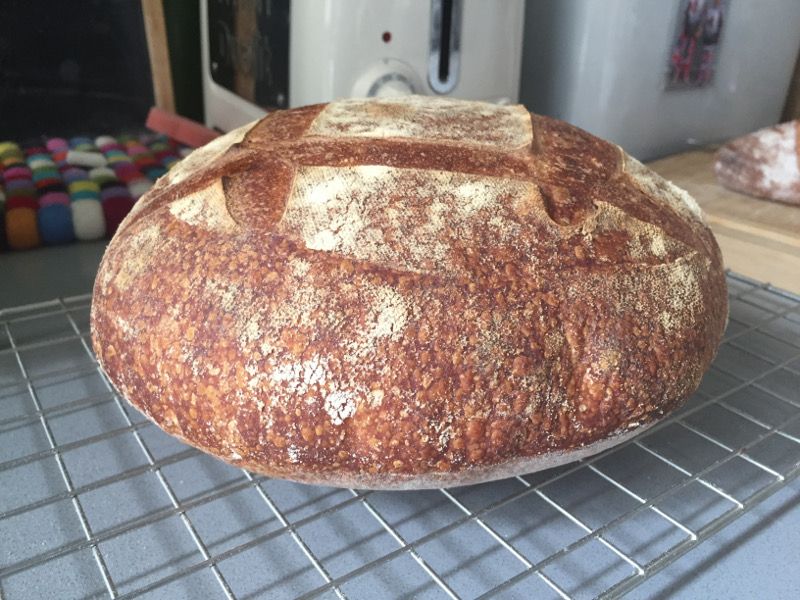
Sourdough bread making as symbolic self-care.
If you don’t know what sourdough is, it’s a naturally fermented bread, without additives. It should be apparent why, in it’s making, it could be a kind of nurturing self-care.

Sourdough is made with yeast, flour, water and salt. It’s best made with organic flour. The yeast element in any sourdough is in the starter which is made with nothing but flour and water, topped up regularly with both, and over about a week the natural yeasts present start to grow and digest the flour. This fermentation process is what gives sourdough its flavour. If left too long without feeding with new flour and water, the fermentation produces not the vinegary sourdough flavour but alcohol (which is not very pleasant). However, neglecting your starter for a bit helps to develop deeper and more complex flavour. You can also buy established starters, mine is around 40 years old and I was given it by a friend.
The process of making a loaf takes time and a little patience. A regular loaf of bread, using bakers yeast takes around an hour to rise, a sourdough takes about six to seven hours, this is due to the slower metabolism of the natural yeasts in the starter. So you have to plan ahead when making this kind of bread at home. You also have to be able to tend to the dough as it rises. The dough doesn’t require kneading to encourage the gluten production as this happens over the time it takes to rise, but you do have to fold and stretch the dough as it does so. You can be off doing other things, as it rises, and come back to it sitting in it’s bowl to gently stretch and fold the dough every hour or so.
After about three hours you can shape the loaf and leave it to do it’s final prove in a shaping basket. This can be left at room temperature for around three and a half hours or you can put it in the fridge and leave it for 12-16 hours before baking.
Baking itself is fascinating, I never tire of watching a loaf rise in the oven in a kind of accelerated finish to what it’s been doing all day in the bowl or basket. Then after cooling, you can cut it open and eat it. I’ve never made a sourdough that hasn’t tasted good, although they don’t always look as nice as the one pictured.
I see this process, on one level, as symbolic self-care. A self-nourishing process, a process that requires precision in measuring ingredients as well as a gentleness in handling the dough and a mindfulness in the production of something that can be baked. Baking the loaf makes the ingredients digestible (and sourdough may be more digestible than supermarket loaves); you can’t eat raw dough without some difficulty and resultant pain. It also reminds me of the therapeutic process in therapy or the working through and processing of unresolved emotions or trauma. You make a sourdough loaf in the same way that you should care for yourself and in doing so it’s a ritualistic, symbolic embodiment of looking after yourself or whoever you are making the loaf for.
On another level the starter is symbolic of a life. You can give bits of it away, you can keep it going over years but you always have to replenish it and leave it to mature before it can be useful in the bread making process. A little neglect gives it character and depth, too much and it dies, you have to keep feeding it to keep it alive and useful. This is how, in life, we build resilience and maturity – we require emotional, spiritual and physical nurturing in order to grow and be useful as people, to have purpose.
Maybe that’s why I find making sourdough bread so satisfying, it means I’m in a good place, taking care of myself in order to be able to take care of others.